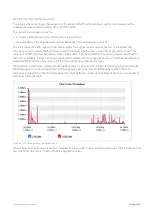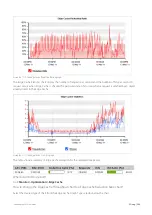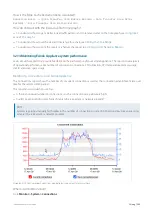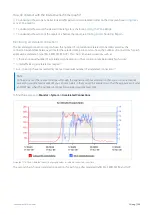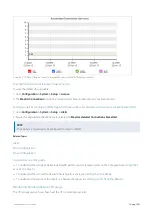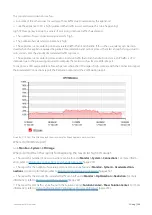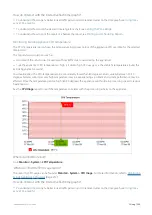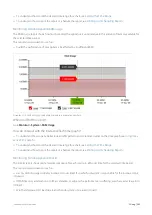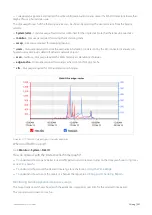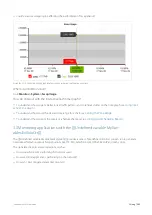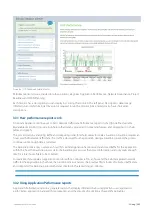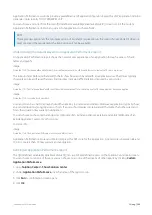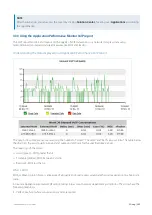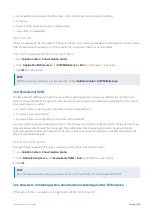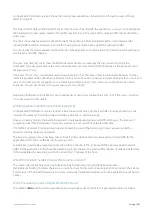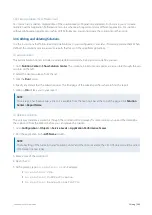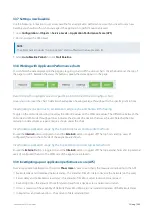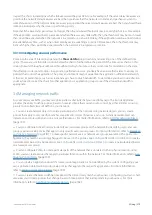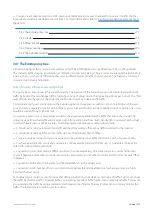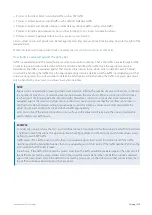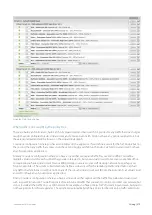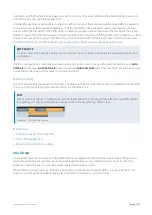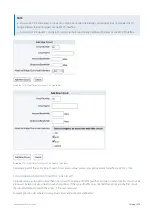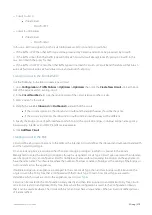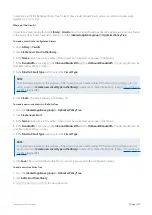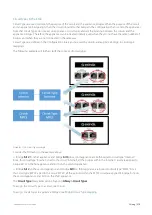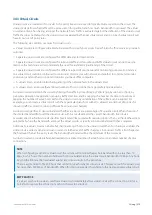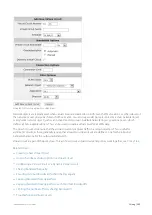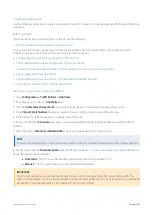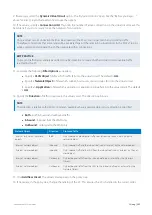
Exinda Network Orchestrator
3 Using
|
267
An Application Performance report shows the network user experience of an application through a series of charts,
tables and graphs.
The Inbound and Outbound Bandwidth charts show how much bandwidth the application is using. You should expect
the bandwidth to show spikes instead of raised flat tops. Flat tops in the graph often indicate traffic may be limited by
policy rules.
The chart shows data measured on the WAN-side of the appliance before accelerated traffic is decompressed for
inbound traffic and after acceleration and traffic shaping policies have been applied for outbound traffic.
You can overlay the data measured on the LAN-side of the appliance to show the amount of reduction achieved due to
acceleration and traffic shaping.
The users and hosts bar charts show the WAN-side data volumes consumed by the top users and hosts for the
application. Typically, applications are used by multiple users or hosts and the traffic distribution is fairly even amongst
the top users or hosts.
If one user or host shows considerably more data volume than the other users, it may be reasonable behavior or it may
indicate a problem worthy of further investigation. Also, you can choose to show just internal endpoints, that is, hosts and
users on the LAN-side of your appliance, or just external endpoints, that is, hosts and users on the WAN-side of your
appliance. You can also choose to show just users, just hosts, or both.
Application Performance Score Metrics You should expect a good score (between 8.5 and 10.0). If the score is less than
7.0, you may want to investigate.
What is Application Performance report baselining?
An Application Performance monitor requires a baseline understanding of observed traffic for an application in your
network. The process of collecting data and setting a baseline is called baselining.
Once you create a monitor, the baselining operation starts automatically analyzing traffic and begins the process of
computing initial threshold values. This process requires an hour's worth of network traffic data.
If no traffic is observed for an application during a baselining period, the baselining process repeats until traffic is
observed and thresholds are calculated.
The baselining process may not always take an hour if an Exinda Appliance has observed and stored traffic for the
application within the hour the baselining process starts.
For example, if you create an application monitor with ten minutes left in an hour and the Exinda captured network
traffic for the application in that hour, the baselining process analyzes the previous fifty minutes of collected traffic data.
It then completes the baseline period in the remaining 10 minutes of the hour.
What if the Solution Center indicates there are no solutions?
The solution descriptions are served up from an Exinda hosted server. If your [[[Undefined variable
MyVariables.ExSoluCtr]]] indicates there are no solutions, check for Internet connectivity and connectivity to the Exinda
hosted server. If the Exinda hosted server is down, previously instantiated solutions will still be available in your Solution
Center.
What if a solution requires a higher Exinda OS version?
The solution's
Run
button won't be available until you upgrade your Exinda OS to the appropriate version or higher.
Summary of Contents for EXNV-10063
Page 369: ...Exinda Network Orchestrator 4 Settings 369 ...
Page 411: ...Exinda Network Orchestrator 4 Settings 411 Screenshot 168 P2P OverflowVirtualCircuit ...
Page 420: ...Exinda Network Orchestrator 4 Settings 420 Screenshot 175 Students OverflowVirtualCircuit ...

